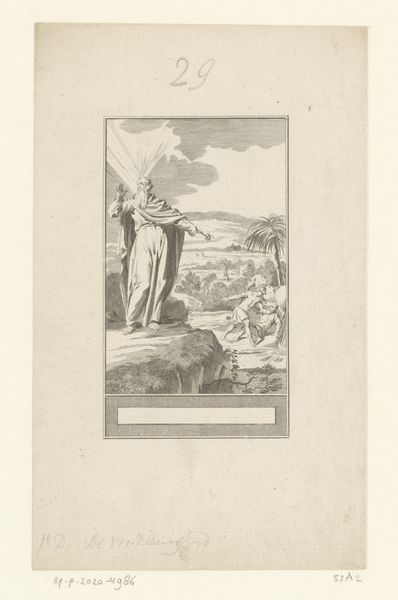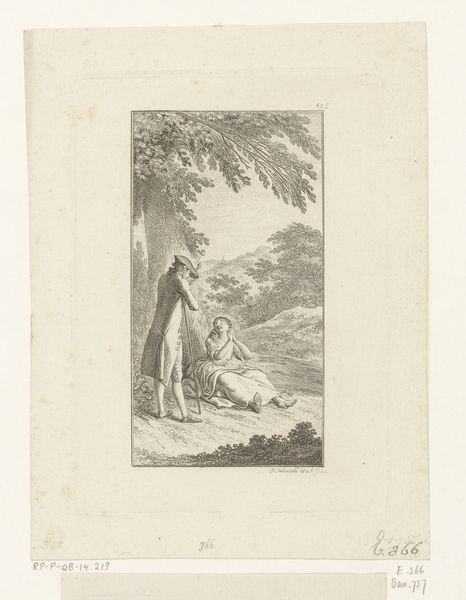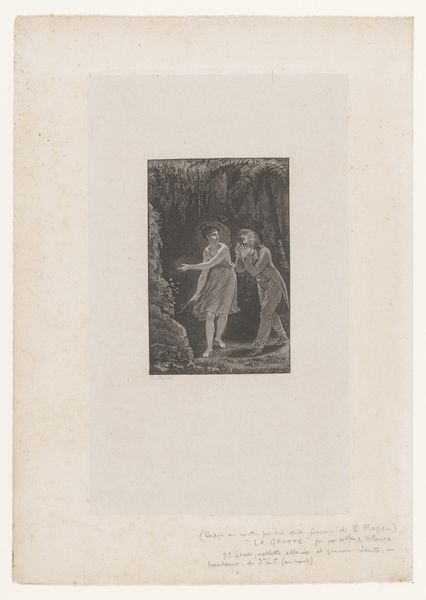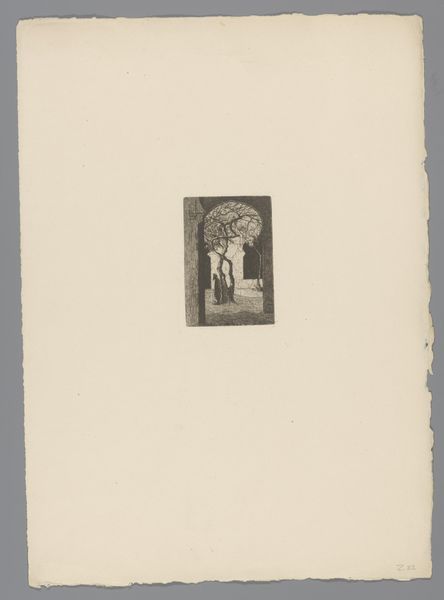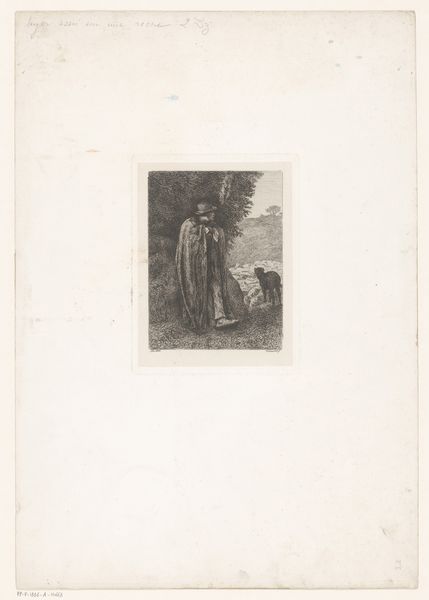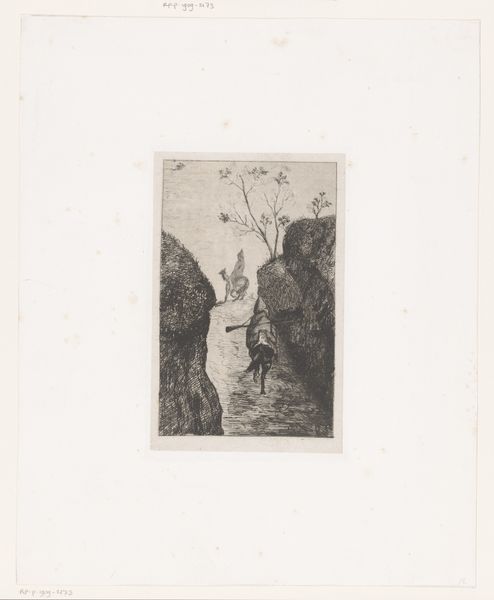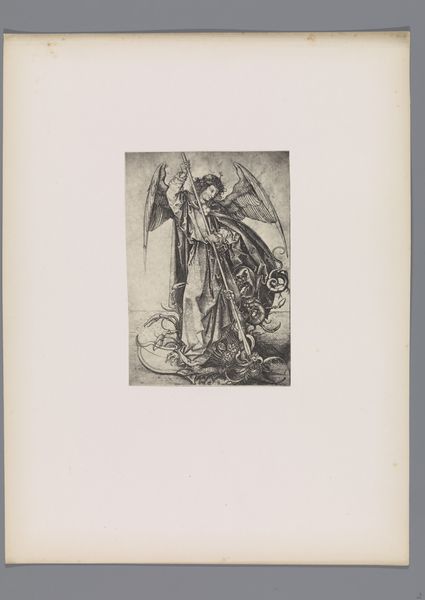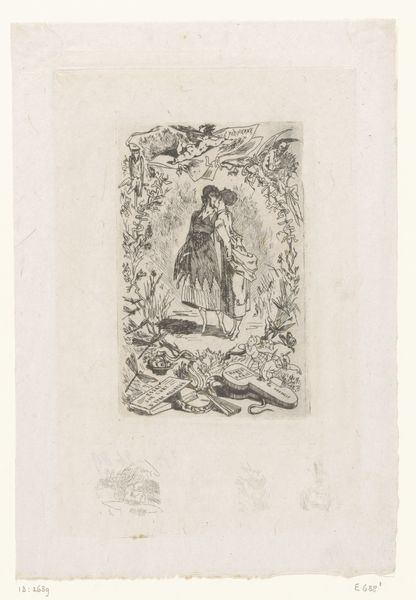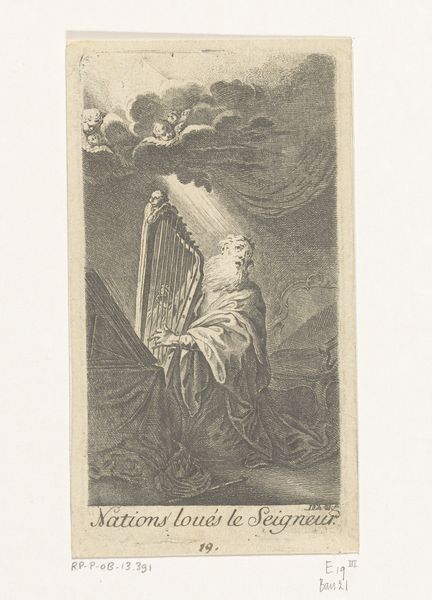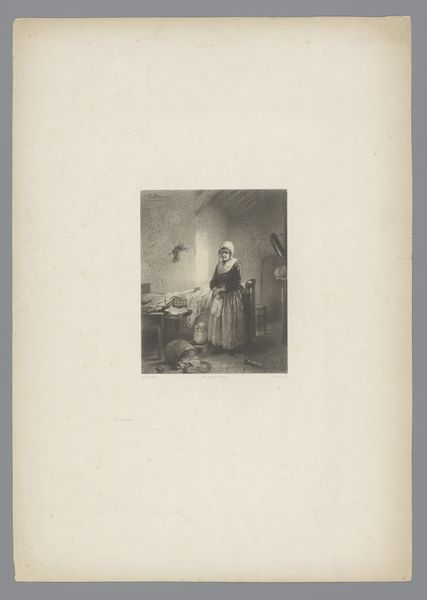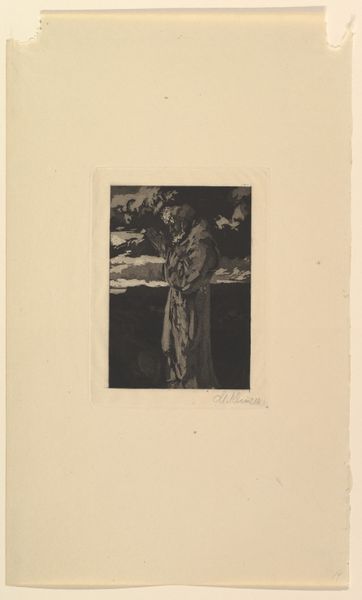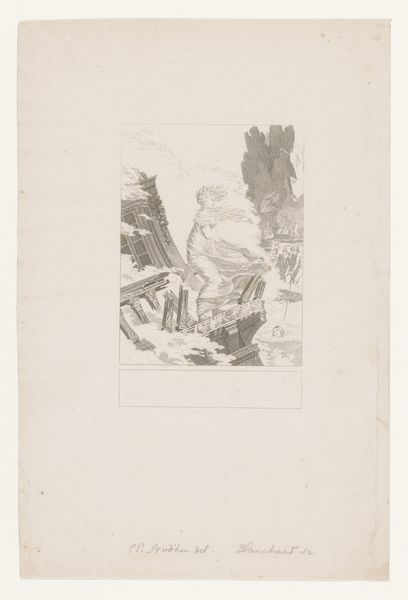
drawing, print, etching, paper
#
portrait
#
drawing
# print
#
etching
#
landscape
#
german-expressionism
#
paper
#
mountain
#
realism
Dimensions: height 209 mm, width 141 mm
Copyright: Rijks Museum: Open Domain
Curator: Immediately striking. There’s something unsettling yet beautiful about this scene. Editor: Indeed. We’re looking at “Vrouw bij een blokhut turend over het berglandschap,” or "Woman by a Log Cabin Gazing over the Mountain Landscape," attributed to Alois Kolb, and created sometime between 1885 and 1924. It's an etching on paper. Curator: Etching... that explains the incredible detail. It feels so tactile, like I could run my fingers over the mountains and feel their roughness. You can practically smell the pine. I wonder about the paper it's printed on. The process must have been quite meticulous. Editor: Absolutely. Etching demanded significant labor and skill, impacting the dissemination and perceived value of such works. And that fits into a broader movement, really; the piece’s evocation of German Expressionism is compelling given that context of shifting aesthetics and societal upheaval during the late 19th and early 20th centuries. The role of art in portraying cultural identity becomes a vital subject for conversation. Curator: Yes, the composition draws us right in. That figure, gazing out, hand shielding her eyes…she’s part of this rugged, mountainous world but also set apart. How did the printing process reflect artistic movements beyond pure representation, how it becomes an act of translating physical presence onto a page? It reminds me of the discussions surrounding printmaking's role in mass media at that time and questions ideas of art's unique aura. Editor: Right. The woman appears contemplative. Who is she? What is she looking for, or perhaps running from? The mountain as refuge is a recurrent theme during those decades. Considering it was displayed or sold, it invited certain audiences to either yearn for such idealized solitude or to acknowledge a kind of shared national myth. How do we contextualize its cultural significance? Was it truly reflective or rather aspirational, perpetuating idealized images in German culture at the time? Curator: It leaves you wondering, doesn't it? A woman, her craft, a log cabin in the mountain... everything involved is tangible and concrete. Editor: It provides much to ponder how history influences meaning in this art.
Comments
No comments
Be the first to comment and join the conversation on the ultimate creative platform.
